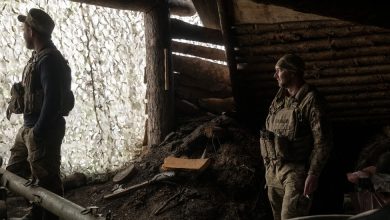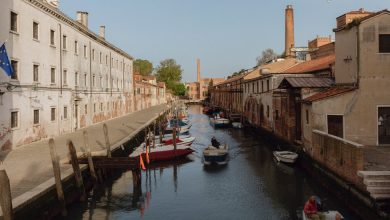The Imperial Fictions Behind the Queen’s Platinum Jubilee

“I declare before you all that my whole life whether it be long or short shall be devoted to your service and the service of our great imperial family to which we all belong.” It is said that Princess Elizabeth wept when first reading this speech. Marking her 21st birthday, and broadcast in 1947 from a bougainvillea-studded garden in Cape Town, it heralded the young royal’s future embodiment of Britain and its empire and Commonwealth.
At the time, independence demands were igniting across the postwar empire. India and Pakistan were nearing liberation from British colonial rule, but Clement Attlee’s Labour government had no intention of knuckling under elsewhere. Britain had begun an imperial resurgence policy, aiming to rebuild a fiscally devastated postwar nation and claim Big Three status on the backs of the empire’s colonized population.
For well over a century, Britain’s claims to global greatness were rooted in its empire, thought to be unique among all others. Sprawling over a quarter of the world’s landmass, the British Empire was the largest in history. After spearheading the abolition movement, Britain emerged the purveyor of a liberal imperialism, or “civilizing mission,” extending developmentalist policies, which cleaved to racial hierarchies, to its 700 million colonized subjects, purporting to usher them into the modern world.
Celebrating Queen Elizabeth II’s 70 years on the throne, the platinum jubilee is pregnant with meaning about the nation’s imperial past and the monarchy’s overdetermined role in it. Grand memorials and statues celebrating the empire’s heroes proliferated after the Victorian era, and London became a commemorative imperial and royal parade ground. Now, it is the center stage for the queen’s unprecedented celebration at a time when long-simmering imperial history wars — with the public, politicians, scholars and the media hotly contesting the meanings, lived experiences and legacies of the British Empire — are exploding.
Protesters in Britain have taken to the streets, the floor of Parliament and the media, demanding racial justice and a colonial reckoning. Clad in black face masks, some marched to London’s Parliament Square in June 2020, chanting “Churchill was a racist.” They stopped at the prime minister’s statue, striking out his name with spray paint and replacing it with the damning words being chanted.
In few other countries does imperial nationalism endure with such explicit social, political and economic consequences. Chafing against movements to “decolonize” Britain, Prime Minister Boris Johnson and his Conservative Party’s Brexit campaign touted a “Global Britain” vision, an Empire 2.0. “I cannot help remembering that this country over the last 200 years has directed the invasion or conquest of 178 countries — that is most of the members of the U.N.,” he declared. “I believe that Global Britain is a soft power superpower and that we can be immensely proud of what we are achieving.”
Debates about the meanings and legacies of Britain’s empire are not new. However, recent crises are colliding with a singular occasion of royal splendor, spotlighting gaps between fact and fiction, lived realities and imperial myth making, and the monarch’s historically embedded role as the avatar of Britain’s empire.
For generations, the monarchy derived healthy doses of its power from empire, just as imperial nationalism has drawn legitimacy from the monarchy. This phenomenon stretches back to King Henry VIII, who first declared England as an empire in 1532, while his successors granted royal charters facilitating the trans-Atlantic trade in enslaved people and the conquest, occupation and exploitation of the Indian subcontinent and vast swaths of Africa.
It was the Victorian era, with the queen as empire’s anointed matriarch, that laid the groundwork for the civilizing mission. After Britain waged some 250 wars in the 19th century to “pacify” colonial subjects, a contested though coherent ideology of liberal imperialism emerged that integrated sovereign imperial claims with a huge undertaking to reform colonial subjects, often called “children.” Britain’s discerning eye judged when the “uncivilized” were fully evolved.
If Britain’s civilizing mission was reformist in its claims, it was brutal nonetheless. Violence was not just the British Empire’s midwife, it was endemic to the structures and systems of British rule. Nationalists and freedom fighters were often cast as criminals or terrorists and their actions — including vandalism, labor strikes, riots and full-blown rebellions — as political threats. Coercion would not just subdue these so-called recalcitrant children. Colonial officials and security forces wanted their infantilized subjects to see and feel their own suffering, to know that it was deliberate and purposeful. British officials had a term for this: the “moral effect” of violence.
British officials also obsessed over the rule of law, insisting this was the basis of good government. But in the empire, rule of law codified difference, curtailed freedoms, expropriated land and property and ensured a steady stream of labor for empire’s mines and plantations, the profits from which helped fuel Britain’s economy.
By the 20th century, the empire was replete with legal exceptionalism in the form of martial law and states of emergency needed to maintain control. While lawful, these states of exception granted extraordinary powers of repression. When security forces needed more discretion, or when their actions constituted unsanctioned violence, British officials rendered their behavior legal by amending old regulations and creating new ones.
This recurring phenomenon turned the exceptions into norms. British security forces deployed ever-intensifying forms of systematic violence, making empire look like a recurring conquest state. A well-oiled repressive machinery emerged, directed from London and transferred from one imperial location to the next by colonial officials and security forces.
Five years after her famous BBC radio address, Princess Elizabeth inherited this empire when she ascended to the throne. For most of the first three decades of her reign, Britain was embroiled in recurring end-of-empire conflicts as Labour and Conservative governments alike largely jettisoned wartime guarantees of self-determination. The nation’s future, like its past, depended on empire’s real and imagined benefits. As George Orwell famously wrote, “The alternative is to throw the Empire overboard and reduce England to a cold and unimportant little island where we should all have to work very hard and live mainly on herrings and potatoes.”
Were empire thrown overboard, much of the monarchy’s symbolic power would have gone with it. From her first prorogation of Parliament, Queen Elizabeth II, like her predecessors, affirmed old imperial fictions and cultivated new ones. This was her prescribed role, her monarchical duty. She reminded her grieving nation of its imperial greatness and the sacrifices being made to save empire from encroaching terrorism in the empire. “In Malaya,” she declared, “My Forces and the civil administration are carrying out a difficult task with patience and determination.”
This difficult task, meant to suppress an anticolonial, communist insurgency, included mass detention without trial, illegal deportations and one of the empire’s largest forced migrations, moving hundreds of thousands of colonial subjects into barbed-wire villages. Many lived in semi-starvation, under 24-hour guard, and were forced to labor and abused.
Liberal imperialism endured, however, its elasticity giving rise to new lexicons for reform. Colonial subjects were being “rehabilitated” in an unprecedented “hearts and minds” campaign. Updated postwar humanitarian laws and new human rights conventions — legally and politically problematic, particularly on Britain’s widespread use of torture — partly prompted such doublespeak while British governments repeatedly denied repressive measures, secretly ordering wide-scale destruction of incriminating evidence.
Reformist fictions laundered Britain’s past, watermarking official narratives of end-of-empire conflicts in Kenya, Cyprus, Aden, Northern Ireland and elsewhere. Fragments of damning evidence remain, however. Historians, myself included, have spent years reassembling them, demonstrating liberal imperialism’s perfidity and the ways in which successive monarchs manifestly performed the empire and its myths, drawing symbolic power from their sublime in loco parentis role civilizing colonial subjects while — perhaps unwittingly given their governments’ cover-ups — honoring the dishonorable with speeches, titles and medals.
In 1917, for instance, King George V introduced the Order of the British Empire, celebrating civilian and military service with the Knight and Dame Grand Cross (GBE) the highest-ranking honor. The Member of the Order of the British Empire (MBE) is the lowest, with three others in between. To this day, the queen still confers hundreds of these medals annually, which continue to bear the motto “FOR GOD AND THE EMPIRE,” the two wellsprings of monarchical power.
Such conferrals are inherently political gestures. One case among many was in 1950s Kenya where Britain detained without trial over one million Africans during the Mau Mau Emergency. Terence Gavaghan, the architect of the “dilution technique,” or systematized violence used to “break” detainees, was awarded an MBE. John Cowan, his lieutenant, was also given one despite, or because of, his role in crafting the “Cowan Plan,” which led to the beating deaths of 11 detainees. Known as the Hola Massacre, it threatened the Conservative government of Harold Macmillan, who wrote to the queen in 1959 that the “incident” was by no means “excused,” though Her Majesty’s Government “can hardly be held responsible for the faults of commission or omission of quite minor officials.”
Scapegoating tactics and royal affirmations of empire’s nefarious agents were long part of Britain’s modus operandi, as was developmentalist language masquerading as benign reform. When independence swept through the empire in the 1960s, colonies were “growing up,” according to Macmillan. Britain declared its civilizing mission a triumph, and the Commonwealth of Nations, today comprising 54 countries, most of which are former British colonies, the logical coda.
The queen’s considerable energy has cultivated the Commonwealth as a supposed constructive and vital force in the world, something that historian Philip Murphy has documented. Keeping myths of Britain’s soft power and imperial benevolence alive, she repeatedly animates them in the public’s imagination. Flag-waving royal tours heralded her visits to nearly all the Commonwealth nations, some on multiple occasions. She has rarely missed the biennial Commonwealth gathering. Nor does she pass on opportunities to foreground the monarchy’s role in binding together these nations, with their alleged shared beliefs and values, a trope unlost on some Brexiters still pedaling a misguided belief in the Commonwealth as a replacement for the European Union.
Yet, the queen’s role as Head of the Commonwealth is nothing more than a title. It has no constitutional function and is not, a priori, inherited by her successor. What is inheritable, however, is the monarch’s role as symbolic head of state for the 15 nations comprising the Commonwealth Realm.
It was to the Caribbean Commonwealth Realms that the Duke and Duchess of Cambridge were recently dispatched, commemorating the queen’s platinum jubilee and affirming her sovereign authority. Few were surprised when they were greeted with condemnation and outrage. Demands for reparations and a colonial reckoning long preceded their weeklong tour, though they forged ahead as if empire was at high noon.
Soon chastened, the duke’s expression of “profound sorrow” for the “appalling atrocity of slavery” did little to temper local and international anger. Demands for a formal apology for slavery and colonialism raged, laying bare the monarchy’s impotence, and complicity.
Such an apology has not materialized, fraught as it is with legal liability, potentially putting the monarchy, and the British government, on the hook for massive damages. The duke, upon his return, offered a familiar moth-eaten dedication to the “Commonwealth family,” though presciently conceded how his “tour has brought into even sharper focus questions about the past and the future.”
As the queen is feted for fulfilling her youthful commitment, the monarchy and its perennial source of imperial power hang in the balance. Whether or not heirs to the throne can recraft its image and purpose, toeing a fine line between familial fictions and the institution’s imperially charged and developmentalist lifeblood, is anyone’s guess.
What is becoming clear, however, is the global public’s role. To understand how and why Britain shaped the modern world, it must not turn away from the complicated relationship between monarchy, nation and empire, and the untold sufferings it wrought on colonized populations across the globe. Rather it must untangle and understand this complicated web of power and its tentacular legacies in spite, or because, of its reverence for Queen Elizabeth II.
Caroline Elkins is a professor at Harvard University and Pulitzer Prize-winning author.
The Times is committed to publishing a diversity of letters to the editor. We’d like to hear what you think about this or any of our articles. Here are some tips. And here’s our email: [email protected].
Follow The New York Times Opinion section on Facebook, Twitter (@NYTopinion) and Instagram.




